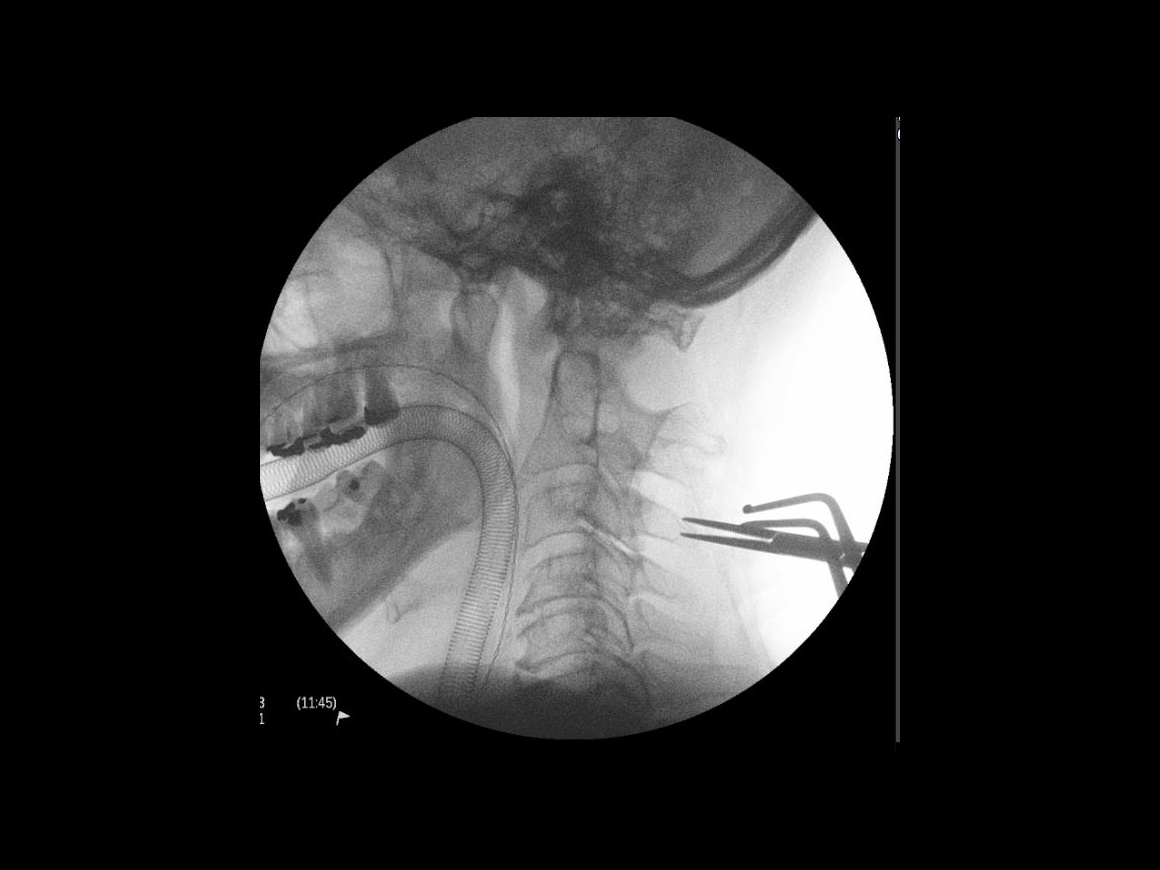Cervical spine decompression: Posterior approach (Degenerative cervical myelopathy)
Overview

Subscribe to get full access to this operation and the extensive Spine Surgery Atlas.
Learn the Cervical spine decompression: Posterior approach (Degenerative cervical myelopathy) surgical technique with step by step instructions on OrthOracle. Our e-learning platform contains high resolution images and a certified CME of the Cervical spine decompression: Posterior approach (Degenerative cervical myelopathy) surgical procedure.
Degenerative cervical myelopathy (DCM) is the commonest cause for spinal cord impairment in adults. This term includes cervical spondylotic myelopathy, ossification of the posterior longitudinal ligament, ossification of the ligamentum flavum and degenerative disc disease. Progressive compression of the spinal cord leads to functional impairment. The burden of disease in the community is likely to rise as a result of the ageing population.
The pathophysiology is spinal cord compression from both static factors and dynamic factors, as a result of age-related changes in the cervical spine. There is resultant ischaemia, inflammation and apoptosis of glial cells.
Patients present with progressive neurological deficits affecting the upper and lower limbs, most commonly deterioration in manual dexterity and gait disturbance. The natural history of this condition is varied. Some patients have long periods of stable symptoms, whereas others experience rapid functional declines.
DCM can be classified as mild, moderate or severe according to the modified Japanese Orthopaedic Association score. This system has 4 domains; upper extremity motor score (5), lower extremity motor score (5), upper extremity sensory score (3) and urinary function score (3). A cumulative score of 0-11 indicates severe DCM, 12-14 indicates moderate DCM and 15-17 indicates mild DCM.
Current guidelines recommend surgical treatment for patients with moderate or severe myelopathy. Patients with mild myelopathy should be offered surgical treatment or a supervised trial of structured rehabilitation, with the option of surgery if conservative management fails.
The aims of surgical treatment of DCM are to achieve a robust decompression of the spinal cord. If static compression is the main problem, patients require decompression alone. If there is a significant contribution from dynamic compression, any decompression should be augmented with spinal fixation.
Surgery can be approached from the front of the neck or the back of the neck. There are several factors to take into account when deciding the surgical approach. Please see indications for further details.
There is ongoing debate on whether patients benefit from augmenting posterior decompression with routine instrumented fixation. Historically there was concern with patients developing late stage kyphotic deformities following decompression alone, although this is a rare occurence. Perhaps more importantly, decompression alone does not address dynamic factors meaning patient may continue to deteriorate despite decompression.
There is early work and interest in a multi-centre randomised controlled trial comparing posterior cervical decompression alone versus decompression and fixation for patients with DCM.
Certainly spinal fixation should always be considered in patients with evidence of pre-existing instability, multi-level disease or kyphotic deformity.
OrthOracle readers will also find the following associated instructional operative techniques of interest:
Cervical laminectomy and resection of spinal cord tumour
Anterior Cervical Discectomy and Fusion using the DePuy Zero-P VA cage
Posterior Cervical Decompression and Fusion using DePuy Mountaineer Instrumentation
Author: Mark Nowell FRCS
Institution: Southmead Hospital, Bristol, UK.
Clinicians should seek clarification on whether any implant demonstrated is licensed for use in their own country.
In the USA contact: fda.gov
In the UK contact: gov.uk
In the EU contact: ema.europa.eu
Online learning is only available to subscribers.



















